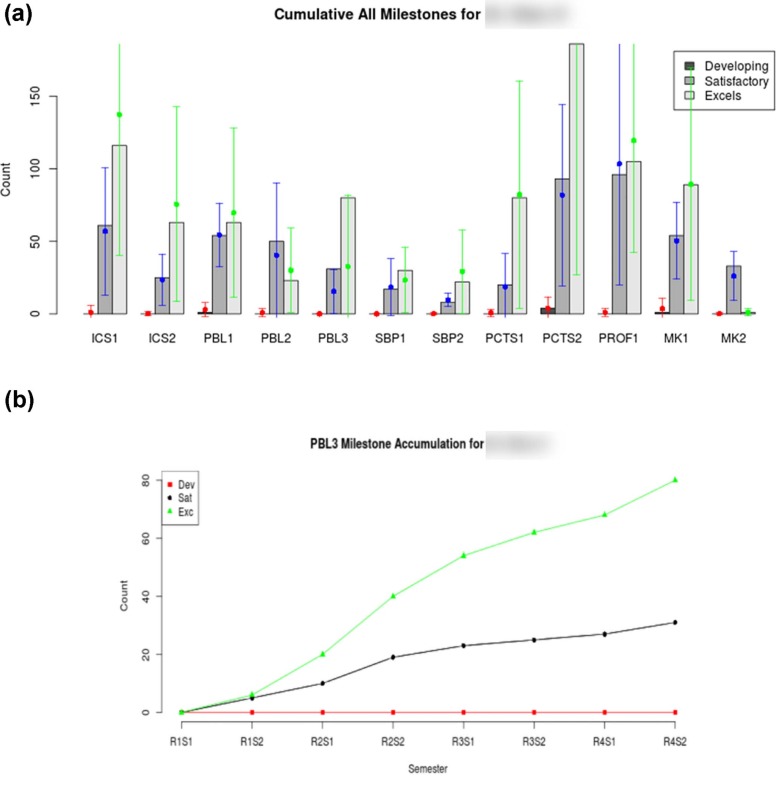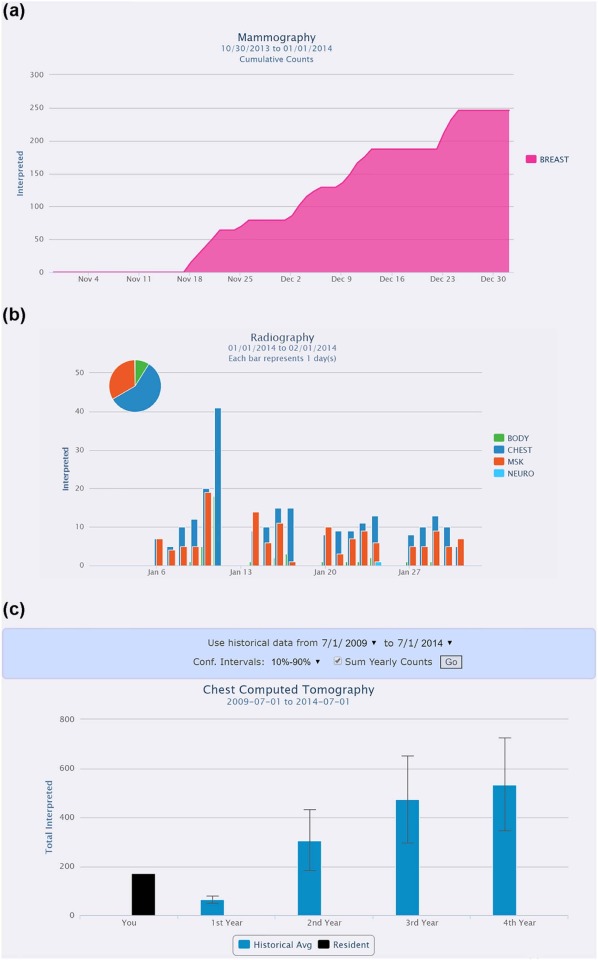The millennial generation consists of today’s medical students, radiology residents, fellows, and junior staff. Millennials’ comfort with immersive technology, high expectations for success, and desire for constant feedback differentiate them from previous generations. Drawing from an author’s experiences through radiology residency and fellowship as a millennial, from published literature, and from the mentorship of a long-time radiology educator, this article explores educational strategies that embrace these characteristics to engage today’s youngest generation both in and out of the reading room.
Background
MMost of today’s radiology trainees belong to millennial or Generation Y. The term millennial generation was first used by William Strauss and Neil Howe in 1991 . Although precise definitions of the generation vary, demographic studies sometimes categorize Americans born between the years 1982 and 2001 as millennials . My 1
1 Although one of the authors (M.H.S.) technically belongs to a different generation, this article is written primarily by and in the voice of the millennial author (P.-H.C.).
generation grew up with the explosion of technology in daily life, immersed in always-on notifications, social media, and memes, and my childhood memories were punctuated by the 9/11 terrorist attack, the war in Iraq, and school violence. Today, we have entered the workforce en masse , surpassing Generation X to become the largest employed American age group according to Pew Research Center . In academic radiology, my generation now comprises your medical students, residents, fellows, and junior staff.
Millennials crave active engagement, multimedia learning, and continuous feedback . Therefore, much published work exists on how to innovate modern education for these needs. In a flipped classroom, students prepare outside of class and focus in-class learning on critical thinking . An abundance of “podcast” lectures—prerecorded audio or video discussing a focused topic—and educational websites brought to life the promise of massive open online classrooms. Digitized lectures personalize learning to the speed of the learner who can repeat, fast-forward, or skip through content . The availability of low-cost personal computers and smart devices enabled computerized simulation and gamification of learning not only in general education but also specifically in interventional and diagnostic radiology . With a myriad of these learning modalities, engaging my generation to learn would seem easier than ever.
However, an overemphasis on technology without considering the millennial learning pattern can backfire. Increasing data show teaching the millennial learner is more than deploying as many of these novel approaches and technology as possible. A survey of millennial medical students shows that when asked to identify the ideal mix of “flipped vs lecture,” only 8% of respondents prefer a 100% “flipped” learning model; in contrast, a majority of the respondents prefer a predominantly lecture-based system . Additionally, although some prefer to watch lecture videos at 1.5× playback speed, evidence shows that higher playback speed correlates with lower knowledge retention .
Get Radiology Tree app to read full this article<
TABLE 1
Summary of Our Approaches to Engage Millennial Trainee
Topic Recommendation(s) Set specific goals
Leverage technology to emphasize relevance
Give formative feedback
Create transparent assessments
Encourage self-development
ACGME, Accreditation Council for Graduate Medical Education; MQSA, Mammography Quality Standards Act; SMART, specific, measurable, attainable, realistic, and time-bound.
Get Radiology Tree app to read full this article<
Engaging Millennial Radiology Trainees
Set Specific Goals
Get Radiology Tree app to read full this article<
Get Radiology Tree app to read full this article<
TABLE 2
Example of Specific Goals for First-time Rotation Through Body CT
Required RSNA physics radiation dose in CT Select the protocols for 360 CT examinations Start the Basic GU&GI online quiz (to be completed by June of R1 year) Complete SAM on the topic: Administration of Iodinated Contrast Complete Quiz on Contrast Reaction
Strongly Recommended Complete RSNA physics online module: CT Image Quality and Protocols Review the 20 Must See First Year Cases found in the Body CT rotation packet
CT, computed tomography; GI, gastrointestinal; GU, genitourinary; RSNA, Radiology Society of North America; SAM, self-assessment module.
Get Radiology Tree app to read full this article<
Get Radiology Tree app to read full this article<
Get Radiology Tree app to read full this article<
Leverage Technology to Emphasize Relevance
Get Radiology Tree app to read full this article<
Get Radiology Tree app to read full this article<
Get Radiology Tree app to read full this article<
Get Radiology Tree app to read full this article<
Give Formative Feedback
Get Radiology Tree app to read full this article<
Get Radiology Tree app to read full this article<
Get Radiology Tree app to read full this article<
Create Transparent Assessments
Get Radiology Tree app to read full this article<
Get Radiology Tree app to read full this article<
Get Radiology Tree app to read full this article<
Get Radiology Tree app to read full this article<
Encourage Self-development
Get Radiology Tree app to read full this article<
What Has Not Changed
Get Radiology Tree app to read full this article<
Get Radiology Tree app to read full this article<
Conclusion
Get Radiology Tree app to read full this article<
References
1. Strauss W., Howe N.: Generations: the history of America’s future, 1584 to 2069.1st Quill ed1991.QuillNew York 538 p
2. Scardamalia R.: Millennials in America.2015.Bernan PressLanham, MD 403 p; (Bernan Press County and City Extra Series)
3. Fry R.: Millennials surpass Gen Xers as the largest generation in U.S. labor force. Pew Research Center; Available at: http://www.pewresearch.org/fact-tank/2015/05/11/millennials-surpass-gen-xers-as-the-largest-generation-in-u-s-labor-force/
4. DeRuisseau L.R.: The flipped classroom allows for more class time devoted to critical thinking. Adv Physiol Educ 2016; 40: pp. 522-528.
5. Subhi Y., Andresen K., Rolskov Bojsen S., et. al.: Massive open online courses are relevant for postgraduate medical training. Dan Med J 2014; 61: pp. A4923.
6. Song K., Chakraborty A., Dawson M., et. al.: Does the podcast video playback speed affect comprehension for novel curriculum delivery? A randomized trial. West J Emerg Med 2018; 19: pp. 101-105.
7. Klein K.A., Neal C.H.: Simulation in radiology education: thinking outside the phantom. Acad Radiol 2016; 23: pp. 908-910.
8. Poot J.D., Chetlen A.L.: A simulation screening mammography module created for instruction and assessment: radiology residents vs national benchmarks. Acad Radiol 2016; 23: pp. 1454-1462.
9. Seaborn K., Fels D.I.: Gamification in theory and action: a survey. Int J Hum Comput Stud 2015; 74: pp. 14-31.
10. Chen P.-H., Roth H., Galperin-Aizenberg M., et. al.: Improving abnormality detection on chest radiography using game-like reinforcement mechanics. Acad Radiol 2017; 24: pp. 1428-1435.
11. Baig M.S., Mallu H.S.: Advances in medical education and practice: what millennial medical students say about flipped learning. Adv Med Educ Pract 2017; 8: pp. 681-682.
12. IBM Institute for Business Value : Myths, exaggerations, and uncomfortable truths. IBM Corporation; Available at: https://www-935.ibm.com/services/multimedia/GBE03637USEN.pdf
13. Greenberger E., Lessard J., Chen C., et. al.: Self-entitled college students: contributions of personality, parenting, and motivational factors. J Youth Adolesc 2008; 37: pp. 1193-1204.
14. Twenge J.M.: Generational changes and their impact in the classroom: teaching Generation Me. Med Educ 2009; 43: pp. 398-405.
15. Desy J.R., Reed D.A., Wolanskyj A.P.: Milestones and millennials: a perfect pairing—competency-based medical education and the learning preferences of generation Y. Mayo Clin Proc 2017; 92: pp. 243-250.
16. O’Neill J., Conzemius A., Commodore C., et. al.: The power of SMART goals: using goals to improve student learning.2006.Solution Tree PressBloomington, Ind. Available at http://public.eblib.com/choice/publicfullrecord.aspx?p=3404931
17. DiPietro M.: Millennial students: insights from generational theory and learning science. Improv Acad 2012; 31: pp. 161-176.
18. Schmitt J.E., Scanlon M.H., Servaes S., et. al.: Milestones on a shoestring: a cost-effective, semi-automated implementation of the new ACGME requirements for radiology. Acad Radiol 2015; 22: pp. 1287-1293.
19. Lakhani P., Kim W., Langlotz C.P.: Automated extraction of critical test values and communications from unstructured radiology reports: an analysis of 9.3 million reports from 1990 to 2011. Radiology 2012; 265: pp. 809-818.
20. Lakhani P., Kim W., Langlotz C.P.: Automated detection of critical results in radiology reports. J Digit Imaging 2012; 25: pp. 30-36.
21. Itri J.N., Kim W., Scanlon M.H.: Orion: a web-based application designed to monitor resident and fellow performance on-call. J Digit Imaging 2011; 24: pp. 897-907.
22. Itri J.N., Kang H.C., Krishnan S., et. al.: Using focused missed-case conferences to reduce discrepancies in musculoskeletal studies interpreted by residents on call. AJR Am J Roentgenol 2011; 197: pp. W696-W705.
23. Chen P.-H., Chen Y., Scanlon M.H., et. al.: Resident performance analytics using structured attending feedback and #hashtag sharing features. Radiology Society of North America 2015 Scientific Assembly and Annual Meeting2015. November 29; Chicago, IL
24. Dewan M., Norcini J.: A purpose-driven fourth year of medical school. Academic Medicine 2017; Oct;1
25. Brenner J.M., Bird J.B., Willey J.M.: Formative assessment in an integrated curriculum: identifying at-risk students for poor performance on USMLE step 1 using NBME custom exam questions. Acad Med J 2017; 92: pp. S21-S25.
26. Shaughness G., Georgoff P.E., Sandhu G., et. al.: Assessment of clinical feedback given to medical students via an electronic feedback system. J Surg Res 2017; 218: pp. 174-179.
27. Ferri-Reed J.: Are millennial employees changing how managers manage?. J Qual Particip 2014; 37: pp. 15-18. 35
28. Hamstra S., Edgar L., Yamazaki K., et al. Milestones Annual Report 2017 [Internet]. [cited 2018 Jan 31]. Available from: http://www.acgme.org/Portals/0/PDFs/Milestones/MilestonesAnnualReport2017.pdf?ver=2018-02-09-074057-013 .
29. Chen P.-H., Chen Y.J., Cook T.S.: Capricorn—a web-based automatic case log and volume analytics for diagnostic radiology residents. Acad Radiol 2015; 22: pp. 1242-1251.
30. Brannagan K.B., Dellinger A., Thomas J., et. al.: Impact of peer teaching on nursing students: perceptions of learning environment, self-efficacy, and knowledge. Nurse Educ Today 2013; 33: pp. 1440-1447.
31. Robb M.K.: Self-regulated learning: examining the baccalaureate millennial nursing student’s approach. Nurs Educ Perspect 2016; 37: pp. 162-164.
32. Snowden M., Hardy T.: Peer mentorship and positive effects on student mentor and mentee retention and academic success. Widening Particip Lifelong Learn 2013; 14: pp. 76-92.

